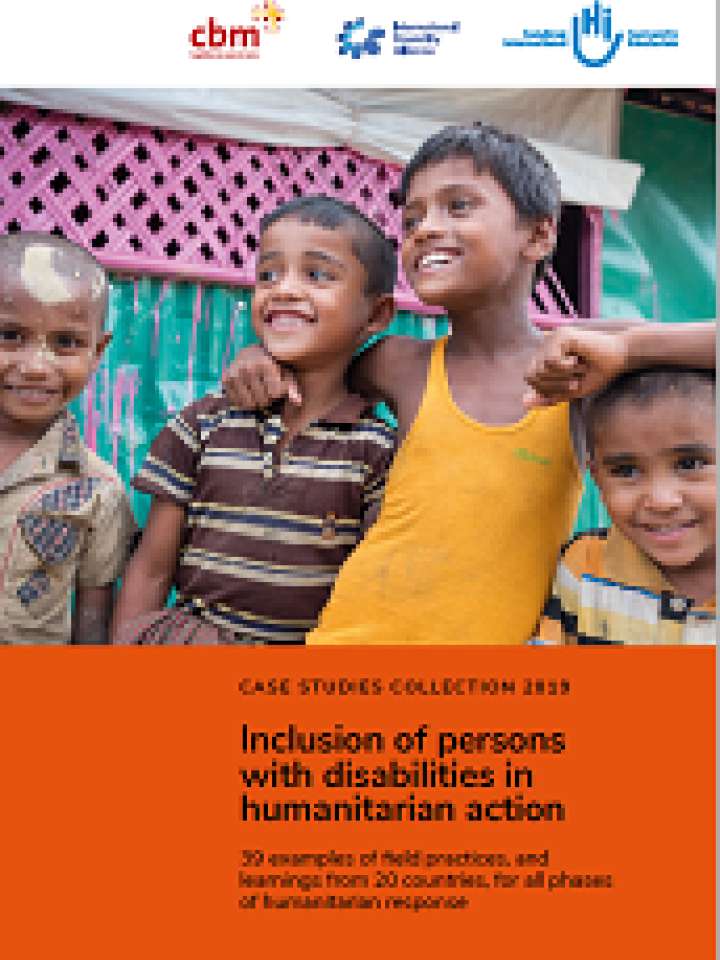Inclusion of persons with disabilities in humanitarian action: 39 examples of field practices, and learnings from 20 countries, for all phases of humanitarian response
The report shows that deliberate and proactive action is required to ensure that persons with disabilities from all constituencies are systematically included and meaningfully participate in DRR and humanitarian preparedness, response and recovery. It draws lessons from field practices, but does not provide technical guidance. The newly published IASC Guidelines are the reference document to seek in-depth theoretical and technical information.
Inclusive humanitarian action for persons with disabilities is an emerging area for most actors implementing the UN Convention on the Rights of Persons with Disabilities (CRPD), engaged in commitments taken at the 2016 World Humanitarian Summit and who have endorsed the Charter on Inclusion of Persons with Disabilities in Humanitarian Action. It is also an evolving concept, and it is therefore essential that evidence be gathered to provide replicable examples of good practices from the field to support the systemic change required by humanitarian stakeholders.
Explore further
